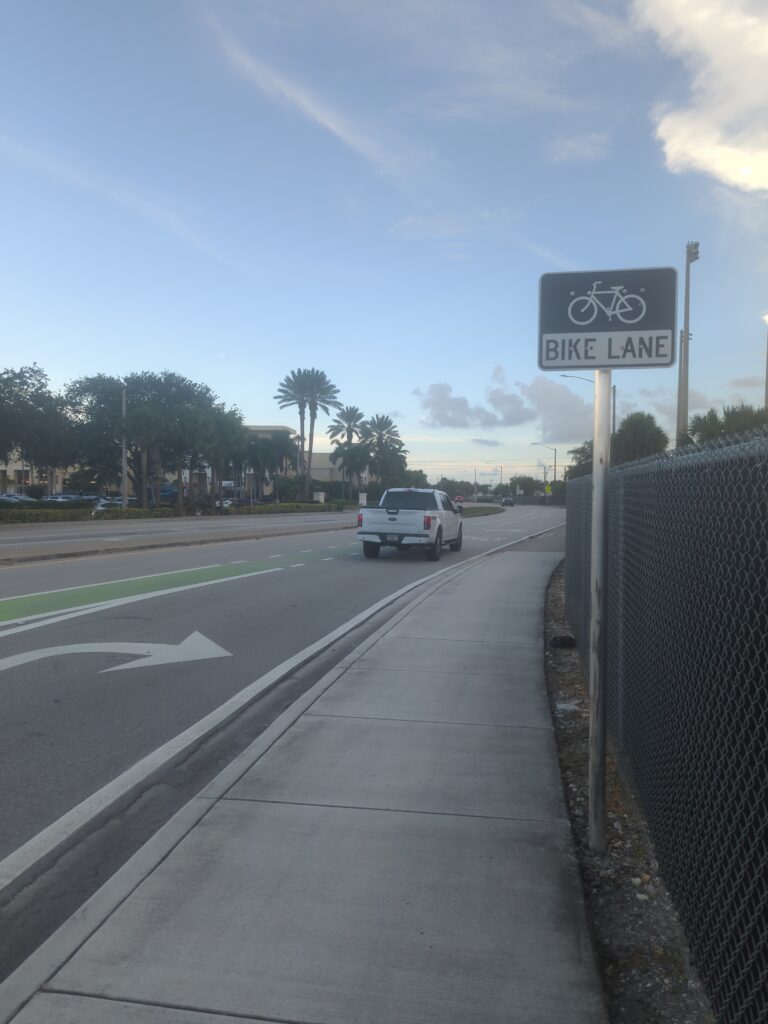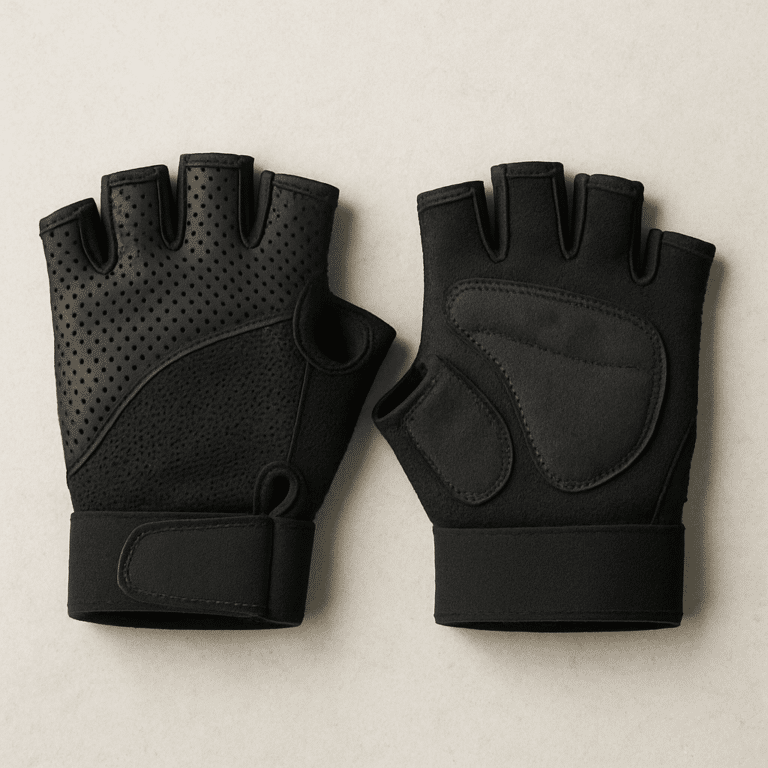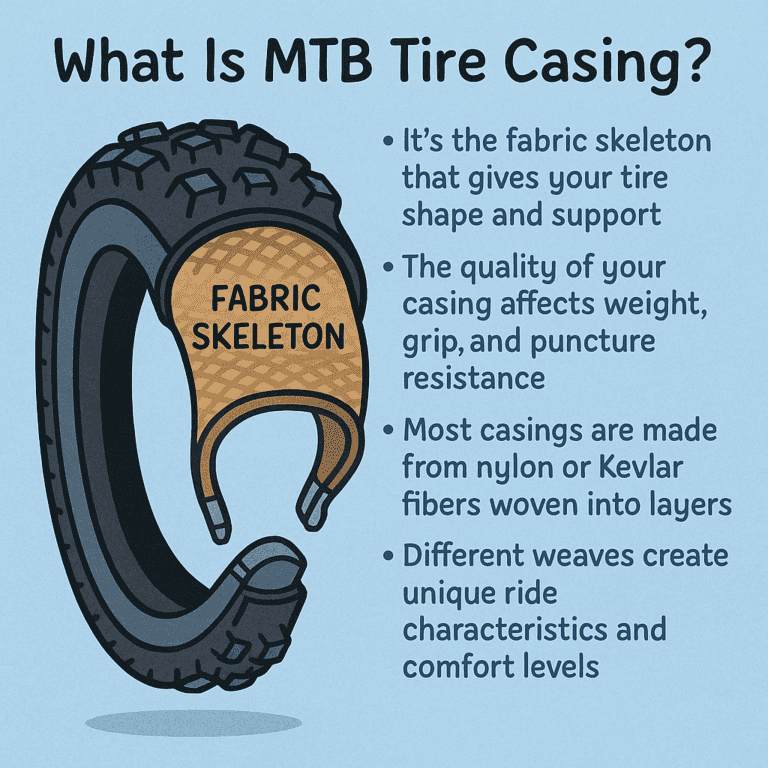Ride Stressfree: Bike Safety Tips in 2025
Did you know cities around the United States, including the one you live in have thousands of bike commuters and still injuries have gone up over time? If you’re considering ditching the car keys for handlebars, or you’re already pedaling to work but want to enhance your safety on the road, you’ve come to the right place!
Bike commuting isn’t just about saving money and staying fit – it’s about transforming your daily journey into something enjoyable and sustainable. But let’s be honest: sharing the road with cars can feel intimidating. The good news? With the right knowledge, gear, and mindset, you can confidently navigate any commute while keeping yourself safe and sound. These seven proven safety strategies will turn you into a confident, protected commuter!
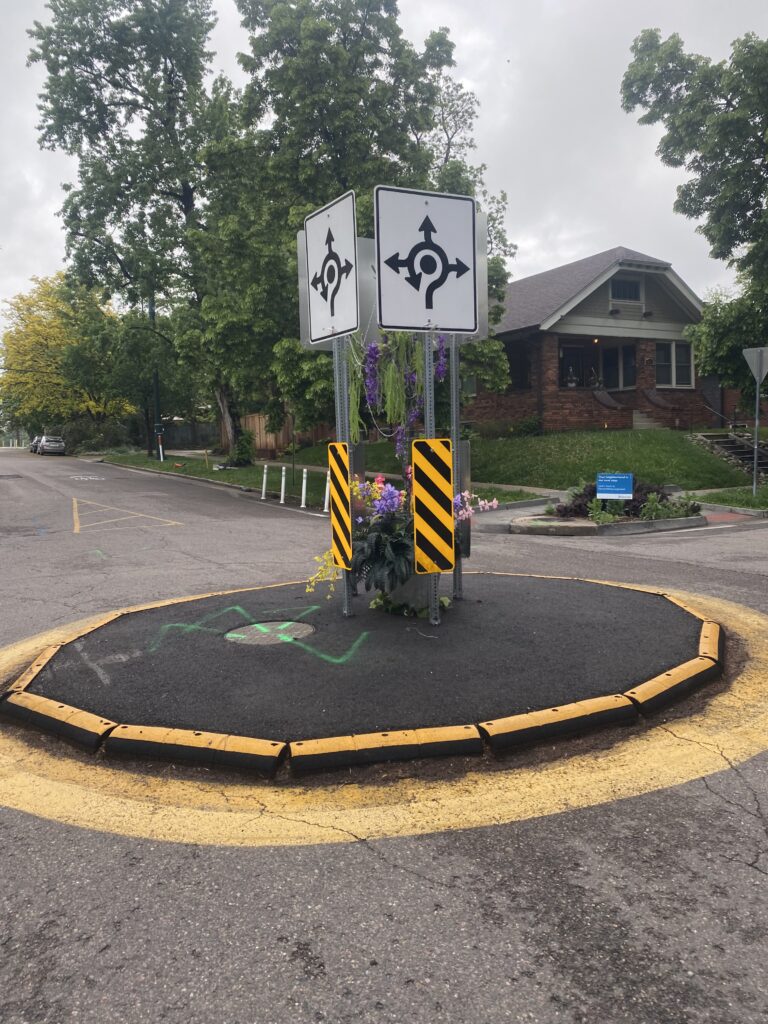
Essential Safety Gear Every Bike Commuter Needs
Let me tell you, I learned about bike commuting safety gear the hard way. My first week cycling to work, I got soaked in rain and my bike hit the curb, bending the tire + frame and making the saddle unridable after the bike flew. Luckily, I was fine!
This is not even as crazy as my big wakeup call, when I was biking on the sidewalk at night, a Porsche was actively pushing my bike into the road, nearly missing the car. The driver just stared at me after I went past him, showing that they had just caught my eye after the incident. That’s when I realized that being visible isn’t just important – it’s everything when you’re sharing the road with 3,000-pound vehicles.
Your helmet is your lifeline, but most people mess this up completely.
I spent three years wearing a helmet that was too loose because I didn’t want “helmet hair.” Turns out, a loose helmet is about as useful as wearing a bowl on your head. The foam should sit snug against your forehead, about two fingers above your eyebrows. When you shake your head, the helmet shouldn’t budge. With past incidents, I fell straight on my chin, cutting through my skin, and hit my cheek and forehead, almost needing stitches; it’s so important!
Here’s something nobody tells you about bike lights: the cheap ones from the hardware store are useless. I’ve thrown away multiple pairs. I even burned through four sets before investing in quality LED systems. For front lights, you need at least 200 lumens for urban commuting, but when it gets dark with no light, I sometimes get up to 600.
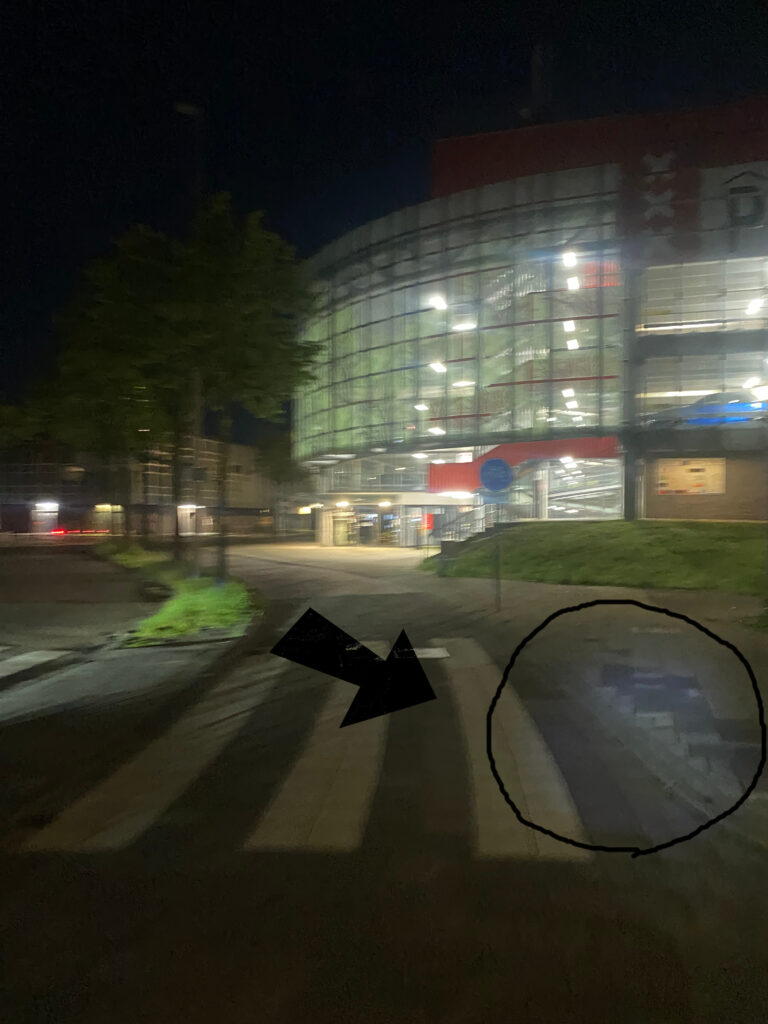
Gloves and eyewear might seem optional, but they’re not.
I learned this during my first fall when I instinctively put my hands out to break the impact. Road rash on your palms is no joke – it takes weeks to heal and makes everything from typing to showering miserable. Good cycling gloves with padded palms will save your skin, literally. They can go straight in your bike bag mounted on your handlebars or panniers. As for eyewear, bugs in your eyes at 15 mph are surprisingly painful, and don’t get me started on what happens when it starts raining. I recommend wearing at least some tight glasses at the very least.
I have started to compile some emergency tools for situations. I’m close to ordering a bike tire repair kit because of all the unexpected situations. From past experiences with other riders, having multiple tire levers (3 – 4), a spare tube, a mini pump, and a multi-tool will save you in so many situations, even for me with my bike group. I remember I got a flat two miles from my apartment without any gear, and it took me 35 minutes to get back. Never again. Learning to change a tube takes about 10 minutes of practice, but it’ll save you hours of frustration.
Weather gear is where a lot of commuters give up entirely. Rain pants might look silly, but showing up to work soaked isn’t exactly professional either. I’ve got a whole system now – waterproof jacket, pants, and shoe covers for heavy rain. In winter, layering is everything. Base layer, insulating layer, then wind protection on top. Your extremities get cold first, so invest in good gloves and warm socks.
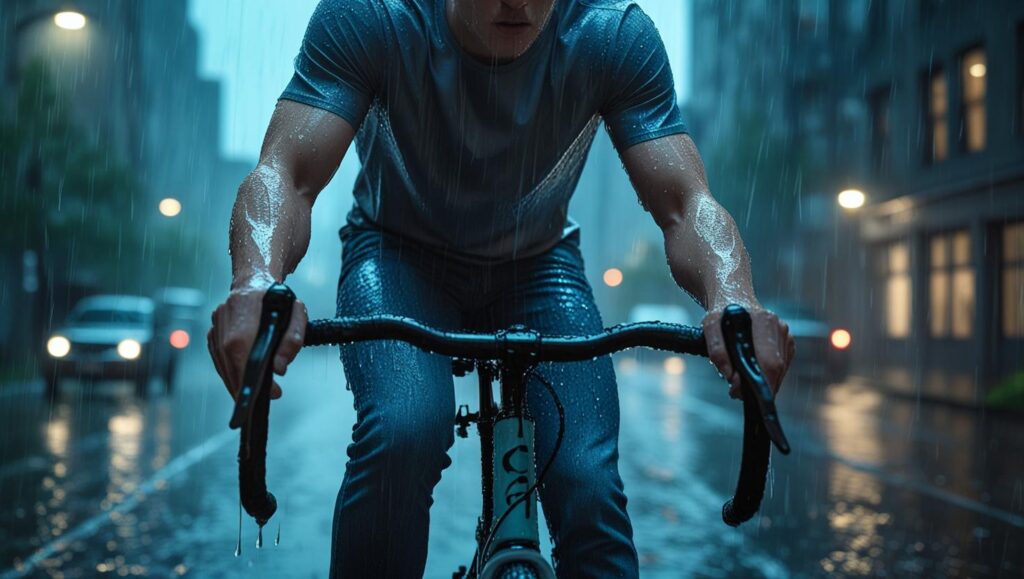
The truth is, good safety gear isn’t cheap, but it’s way less expensive than a hospital visit or missing work because of an injury. Start with the essentials: helmet, lights, and basic visibility gear, then build from there.
Mastering Traffic Laws and Road Rules
Here’s the thing that blew my mind: In most places, bicycles are considered vehicles, not pedestrians. This means you have the same rights as cars, but also the same responsibilities. You can’t just hop on and off sidewalks whenever it’s convenient, and you can’t blow through red lights because you’re “just a bike.” I’ve heard stories of people and even my brother who got pulled over for running a red light on a bike.
Lane positioning is where most new commuters mess up completely. I used to hug the curb because I thought I was being polite to drivers. Wrong move. Riding too far right actually makes you less visible and more likely to get squeezed out by passing cars. The general rule is to ride about three feet from parked cars to not get hit by a left car door, and far enough from the curb that you’re visible. Sometimes this means taking the full lane, which feels scary but is often the safest choice. Trust me, it’s not that scary when cars are going 15 to 20 MPH.
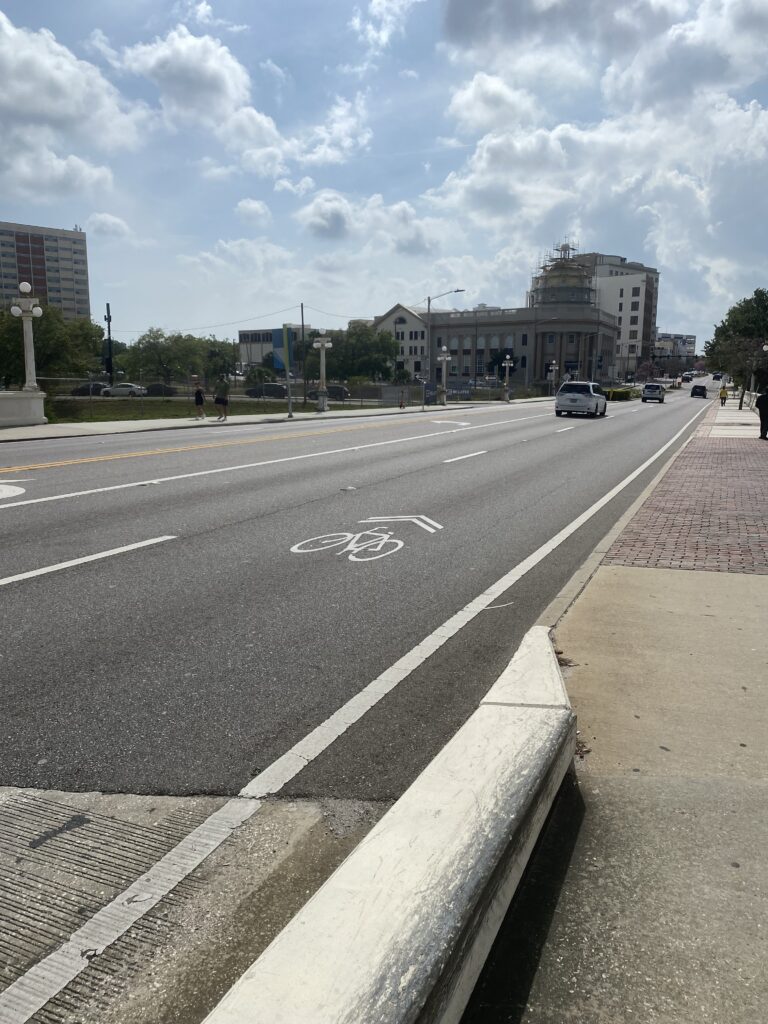
Taking the lane is your legal right when the road is too narrow for cars to pass safely, but man, it took me months to build up the confidence to do it. The first time I “took the lane” on a narrow bridge, I looked back every ten seconds. But here’s what I discovered: most drivers are pretty patient when they can see you and understand what you’re doing. It’s the uncertainty that makes them aggressive. The type of drivers who get angry is the one percent anyway.
Hand signals were another thing I thought I knew, but I butchered them. I was doing some weird half-hearted wave thing that probably confused everyone. Proper hand signals are pretty simple: left arm straight out for left turns, right arm straight for right turns, and left arm down for stopping. The key is making them early and holding them long enough for drivers to see and process what you’re doing. I practice these in my driveway because muscle memory matters when you’re dealing with traffic.
Intersection right-of-way rules are where things get complicated. The basic rule is that bikes follow the same right-of-way rules as cars, but reality is messier. At four-way stops, I’ve learned to make extra sure drivers see me before proceeding, even when I technically have the right of way. You don’t want to be a red-light runner casualty. Being “right” doesn’t help much if you’re in the hospital. I always try to make eye contact with drivers before entering an intersection – if they’re looking at their phone, I wait.
Here’s my biggest piece of advice: predictability trumps everything else. Follow traffic laws not just because they’re the law, but because they make your behavior predictable to other road users. When you act like a vehicle, drivers know how to interact with you. When you’re switching between bike and pedestrian rules randomly, everyone gets confused, and accidents happen.
The investment in learning these rules properly is worth it – it makes every ride safer and less stressful for everyone involved.
Defensive Cycling Techniques That Save Lives
The “assume invisible” mindset saved my life last spring. I was approaching a green light when something in my gut told me to slow down, even though I had the right of way. Good thing I did, a delivery truck ran the red light going at least 35 mph. If I’d been riding like drivers could see me, I would’ve been roadkill. That moment changed everything about how I ride.
Assuming you’re invisible isn’t paranoia, it’s survival. I used to get frustrated when drivers would cut me off or merge into my lane without looking. Now I expect it. This mindset shift has made me a much safer rider because I’m constantly positioning myself for escape routes and watching for signs that someone’s about to do something stupid. It sounds exhausting, but it becomes second nature pretty quickly.
I’m constantly doing these quick visual sweeps: parked car doors, pedestrians stepping into the street, drivers on their phones, potholes, debris. The thing about scanning is that you start to recognize patterns. Cars weaving means the driver’s probably texting. A person walking their dog, not paying attention, might step into the bike lane. Delivery truck double-parked with hazards on? Someone’s about to open a door without looking. Once you start seeing these patterns, you can predict and avoid problems before they happen.
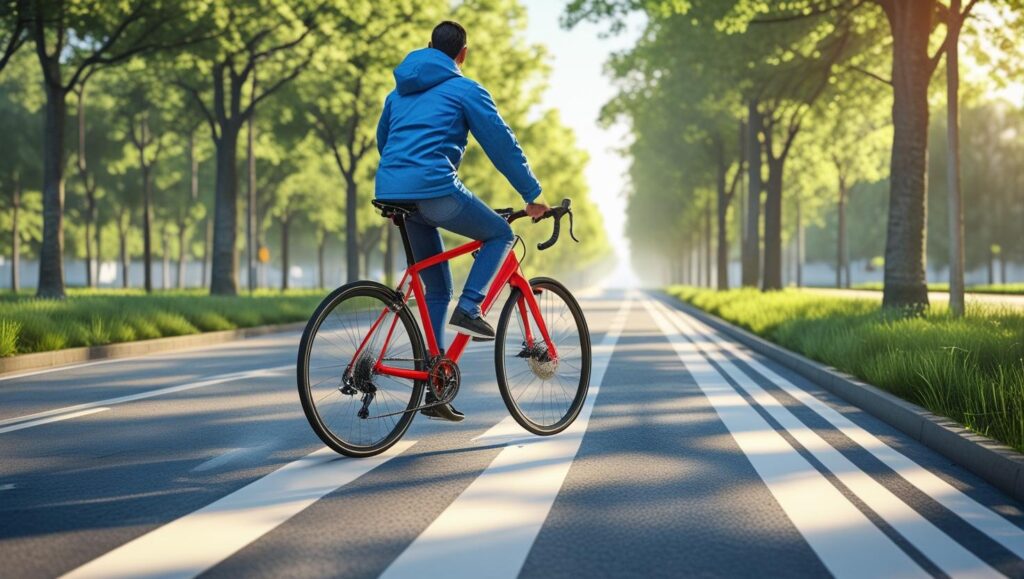
As a new cyclist or an old one, ride at least 3-4 feet away from parked cars, which sometimes means taking more of the lane. The only time it’s an issue for drivers is on a one-lane, 35MPH road where the road isn’t safe for you without a bike lane. Drivers don’t always love it, but I’d rather deal with an annoyed driver than an open car door in my face.
As a cyclist, I actually have avoided 95% of any conflict that has to do with drivers; the biggest complication is weird pedestrians coming up to me. But while on the roads, I try to stay calm and get out of the situation as quickly as possible. If someone’s being aggressive, I’ll pull over and let them pass, or even duck into a parking lot until they’re gone. It’s not worth the risk.
Road rage situations are genuinely dangerous. I’ve had someone spit gum at me before, screaming about how I’m a “yuppie.” It’s strange out here; however, you have to be prepared for everything and don’t react back to these drivers. I’ve seen the worst out in New York City where drivers get most of the road, and delivery vehicles are parked in bike lanes.
Right hooks are probably the most common serious accident I see. This is when a car passes you and then immediately turns right, cutting you off. I’ve had this happen probably a dozen times, and I’m convinced most drivers don’t even realize they’re doing it. The key is watching for turn signals and positioning yourself where you can see the driver’s face. If they can’t see you in their mirror, they can’t see you at all.
At intersections, I’ve learned to be extra cautious about cars turning right on red. They’re usually only looking left for oncoming traffic, not right for cyclists. I always slow down and try to make eye contact with the driver before proceeding. If there’s any doubt, I wait. Remember, drivers never look right into the bike lane or a crosswalk, so anticipate that.
Here’s a new one: emergency braking and evasion techniques are skills I hope I never need but practice regularly. I learned how to do an emergency stop in a parking lot – it’s all about shifting your weight back and using both brakes progressively, not just grabbing them. For evasion, sometimes swerving is better than braking, depending on the situation. I’ve had to swerve around open car doors twice, and both times I was glad I’d practiced the technique.
The bottom line is that defensive cycling isn’t about being scared – it’s about being prepared. These techniques give you options when things go wrong, and believe me, things will go wrong eventually. The goal is to make sure you’re ready when they do.
Weather and Seasonal Safety Considerations
My first rainy commute was an absolute disaster. I figured “a little water never hurt anyone,” so I headed out in regular clothes with regular tires. Within two blocks, I was soaked, couldn’t see through my glasses, and nearly wiped out taking a corner too fast. I spent the rest of that day at work looking like a drowned rat and learned real quick that weather changes everything about bike commuting.
Visibility in rain is the real killer, though. I invested in a good rain jacket with surprisingly bright reflective strips. Drivers’ visibility is reduced just as much as yours, maybe more if their windows are fogging up. I’ve also learned to avoid painted lines and metal surfaces like manhole covers they become ice rinks when wet.
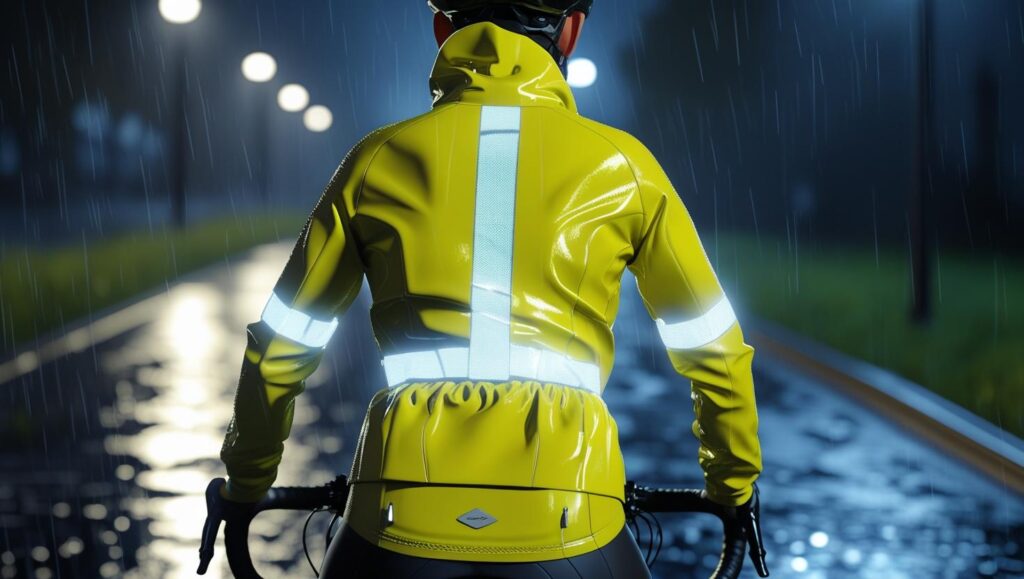
Hot weather riding took some adjustment coming from a cooler climate. I used to just power through the heat, but that led to some serious overheating issues. Now I leave earlier to avoid the worst heat, bring way more water than seems necessary, and wear light-colored, breathable clothing. I learned that cotton kills in hot weather – it holds sweat and makes you feel even hotter. Synthetic moisture-wicking materials are game-changers.
Hydration in summer is no joke. I carry two water bottles now after bonking hard on a particularly hot day. And I put an ice pack in my rear cargo if possible. I was dizzy, nauseous, and had to call someone to pick me up. Embarrassing and avoidable. Now I drink water before I feel thirsty and take electrolyte supplements on really hot days. Your body loses salt through sweat, and just drinking water isn’t enough to replace it.
Wind is probably the most underestimated weather factor. I check wind conditions every morning now because a strong headwind can turn a 30-minute commute into a 45-minute slog. Crosswinds are even more dangerous – I’ve been pushed into traffic by sudden gusts. If winds are over 25 mph, I seriously consider alternative transportation. It’s just not worth the risk or the misery. Just think about that little lane, and those huge cars…
Seasonal maintenance is crucial but easy to forget. I do a deep clean and inspection every season change. Fall & Winter mean checking for summer wear and getting ready for wet weather. Spring is all about fixing whatever winter beat up, and summer prep focuses on heat management and making sure everything’s running smoothly, plus getting tires that can stand the roads you ride on especially if you go through off-road trails..
Your riding style has to adapt to conditions. In winter, I take corners much slower and brake earlier. In summer, I pace myself differently to avoid overheating. In rain, I avoid painted lines and metal surfaces. In wind, I adjust my route to minimize exposure when possible.
The biggest lesson I’ve learned is that there’s no such thing as bad weather, just bad preparation. With the right gear and mindset, you can ride safely in almost any conditions. But knowing when not to ride is just as important as knowing how to ride in tough weather.
Bike Maintenance for Commuter Safety
I used to be that person who’d hop on my bike every morning without even glancing at it. Then one day my bike chain snapped, luckily right near my apartment. Aww, it could’ve been way worse. Now I do a quick safety check every single morning, and it takes maybe 30 seconds but has saved my butt more times than I can count.
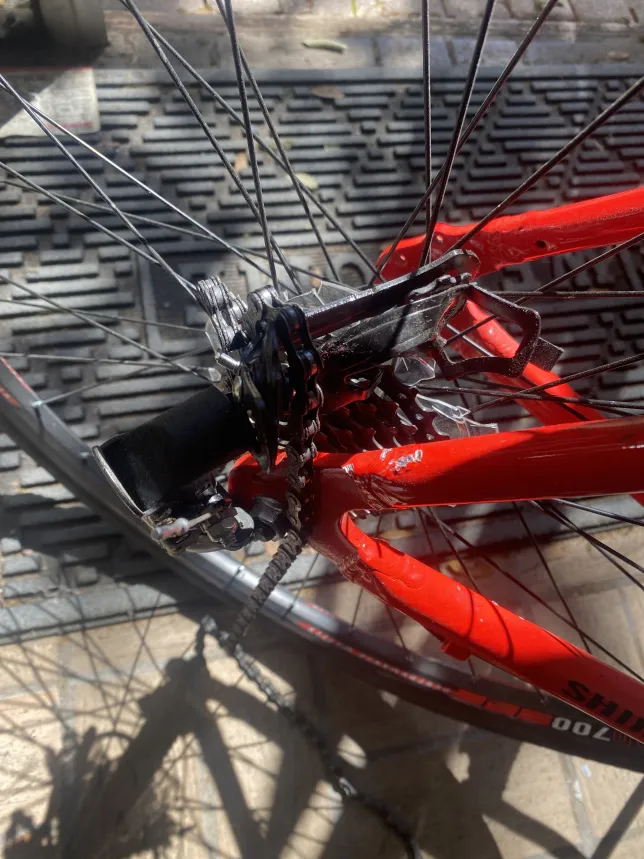
The daily safety check becomes second nature once you get into the habit.
Make sure your intertubes are full of air, check if there are any holes in the tire and your chain is lubed up. Then I spin each wheel to check for wobbles or rubs against the brake pads. Quick visual check of the tires for cuts, embedded glass, or low pressure. I learned to spot low tire pressure by looking at the contact patch; if it looks wider than usual, you probably need air. Finally, I wiggle the wheels to make sure the quick-release levers are properly closed. Also, don’t ride with worn handlebars either.
Knowing when to replace brake pads saved me from a serious accident.
I was riding with worn pads for probably two weeks longer than I should have, telling myself they “still worked fine.” Then during a panic stop, I barely had enough braking power to avoid rear-ending a car. The wear indicators had been telling me for weeks that it was time, but I kept putting it off. Now I replace pads as soon as they hit the wear line – it’s way cheaper than medical bills. I’ve also had issues where my V-Brakes weren’t even aligned correctly, my bad!
Tire replacement timing is tricky because tires can look fine but be completely unsafe. I learned this when my rear tire blew out on the way home from work. The tire looked okay from the outside, but the casing had worn through. Now I replace tires based on mileage and age, not just appearance. Most commuter tires are good for about 2,000-3,000 miles, but that varies hugely based on your weight, riding style, and road conditions.
Basic roadside repairs are essential skills for any commuter. I spent way too long being helpless whenever something went wrong. The game-changer was taking a basic bike maintenance class at my local shop. Learning to fix a flat tire, adjust brakes, and true a wheel gave me so much confidence. Now I carry a basic tool kit with tire levers, spare tube, mini pump, and a multi-tool. The key is practicing these repairs at home when you’re not stressed and in a hurry.
Finding a good bike shop is like finding a good doctor – it’s worth shopping around.
My first shop was convenient and helpful. However, I went to the second, they charged me more for the same repairs, and they always take longer to help me. I recommend doing tune-ups yourself if you want to save over $100; however, they understand commuter needs and can usually do quick adjustments while I wait. Building a relationship with your mechanic is huge – they get to know your bike and can spot problems early. I personally recommend an independent.
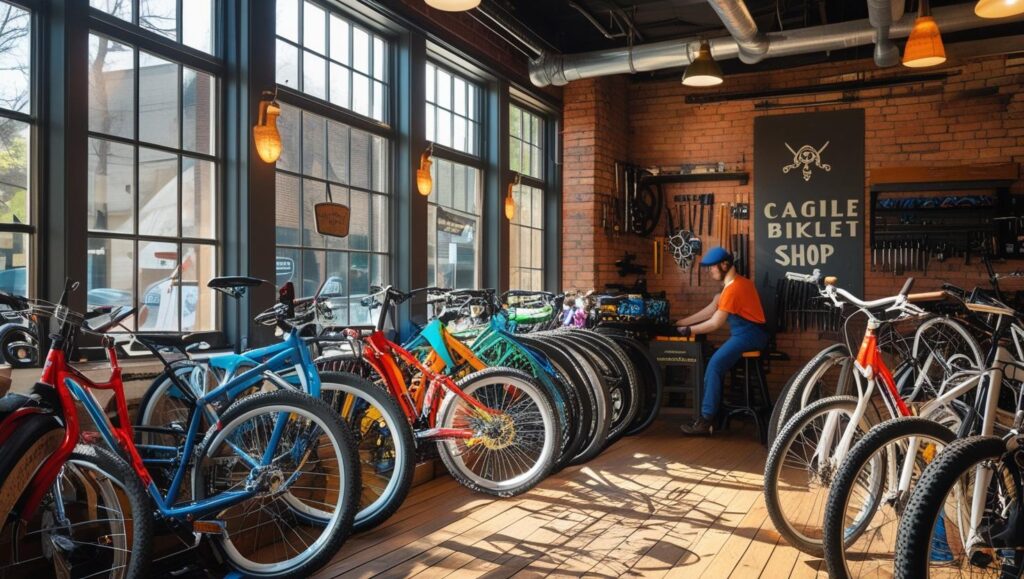
The truth is, bike maintenance isn’t rocket science, but it does require consistency. I probably spend 30 minutes per week on maintenance, but that prevents hours of frustration and potential safety issues. Plus, a well-maintained bike just rides better – smoother shifting, better braking, less noise. It makes the daily commute more enjoyable instead of something you have to survive.
The biggest mistake I see other commuters make is waiting until something breaks to think about maintenance.
By then, you’re usually looking at expensive repairs and missed days of riding. A little prevention goes a long way, and honestly, once you get into the routine, it’s kind of relaxing. There’s something satisfying about keeping your bike running perfectly.
Building Confidence and Staying Alert
Learning to read traffic patterns was huge for my confidence. Rush hour traffic flows pretty predictably once you understand it. I know which intersections always back up, which drivers are likely to be aggressive (anyone in a hurry during school drop-off time), and when to expect the most dangerous situations. Morning commuters are usually more predictable than evening ones; people are caffeinated and focused. Evening drivers are rushing to get back home; however make many more mistakes.
I spent way too long trying to learn everything on busy streets during actual commutes. That was stupid and dangerous. Now I tell new riders to practice in empty parking lots first. Basic skills like emergency braking, swerving around obstacles, and riding in a straight line while looking over your shoulder – all of this stuff needs to be muscle memory before you’re dealing with real traffic. The difference between driving and biking is that with a bike, you’re forced to pay attention at all times, making it less likely for mistakes to happen.
Managing commute stress was probably my biggest challenge. Those first few months, I’d arrive at work a little sweaty, which isn’t exactly the best way to start your day. I learned that most of my sweat and stress came from running late and feeling rushed. Now I leave 10 minutes earlier than I need to, which gives me time to ride at a comfortable pace and deal with unexpected delays. This is also before the sun goes up, making it more comfortable to bike in the Florida heat.
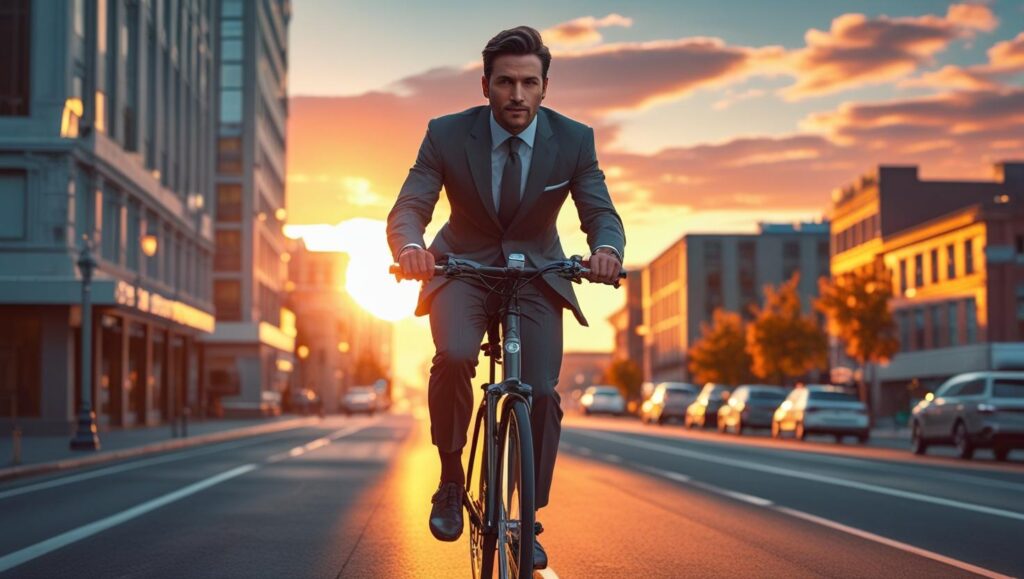
Staying mentally focused is tough, especially on familiar routes where it’s easy to zone out. I’ve caught myself daydreaming and suddenly realizing I forgot to turn down the right streets, and now I’m going up a hill with my road bike. That’s dangerous. Now I have little mental checkpoints along my route where I force myself to do a quick awareness scan – check mirrors, look ahead for problems, assess traffic around me. It sounds mechanical, but it keeps me engaged with what’s happening.
Having backup transportation plans is crucial for maintaining confidence. Knowing I have options if something goes wrong means I’m not trapped in riding in dangerous conditions. I have the local bus routes downloaded on my phone, rideshare apps ready to go, and a couple of friends who can pick me up in emergencies. This safety net lets me make smart decisions about when not to ride, which paradoxically makes me more confident when I do ride.
The biggest confidence booster has been time and repetition. Every successful commute builds on the last one. Every problem I’ve encountered and solved makes me more prepared for the next challenge. I’m not saying I never get nervous anymore – there are still situations that get my heart racing. But now I know I can handle them, and that knowledge makes all the difference.
Building confidence is really about building competence. The more skills you have, the more situations you’ve practiced for, the more confident you’ll feel out there. It’s a gradual process, but every ride makes you a little bit better and a little bit safer.
Conclusion
Your daily bike commute should energize you, not stress you out! By implementing these seven essential safety strategies – from wearing proper gear to mastering defensive cycling techniques – you’re setting yourself up for years of safe, enjoyable rides to work. Remember, safety isn’t about being fearful; it’s about being prepared and confident.
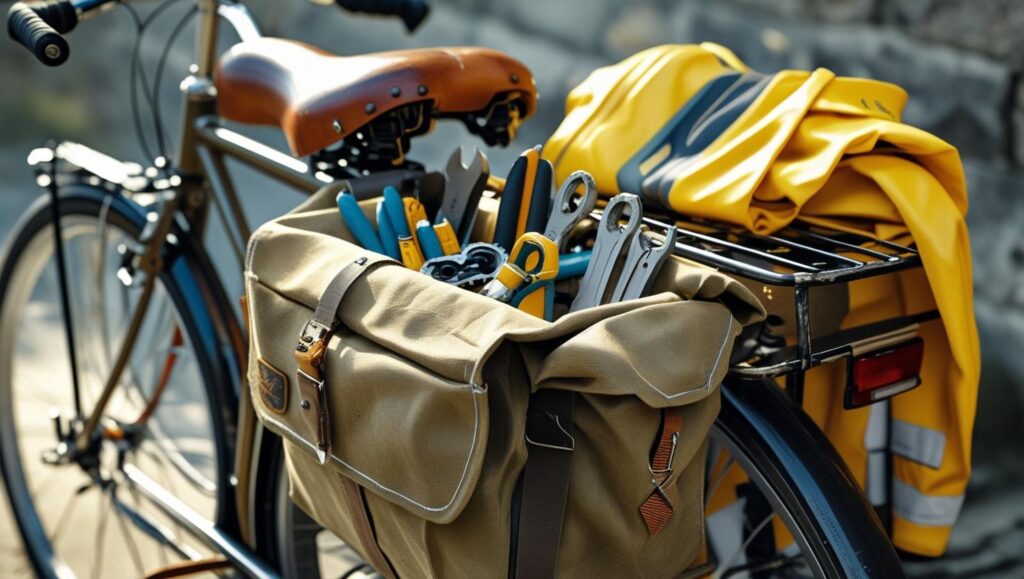
Start with the basics: get a quality helmet, plan a safe route, and practice those hand signals. As you build experience and confidence, you’ll discover that bike commuting becomes second nature. Your wallet, your health, and the environment will thank you for making the switch!
Ready to put these seven tips into action? Your safest commute starts with your very next ride.

